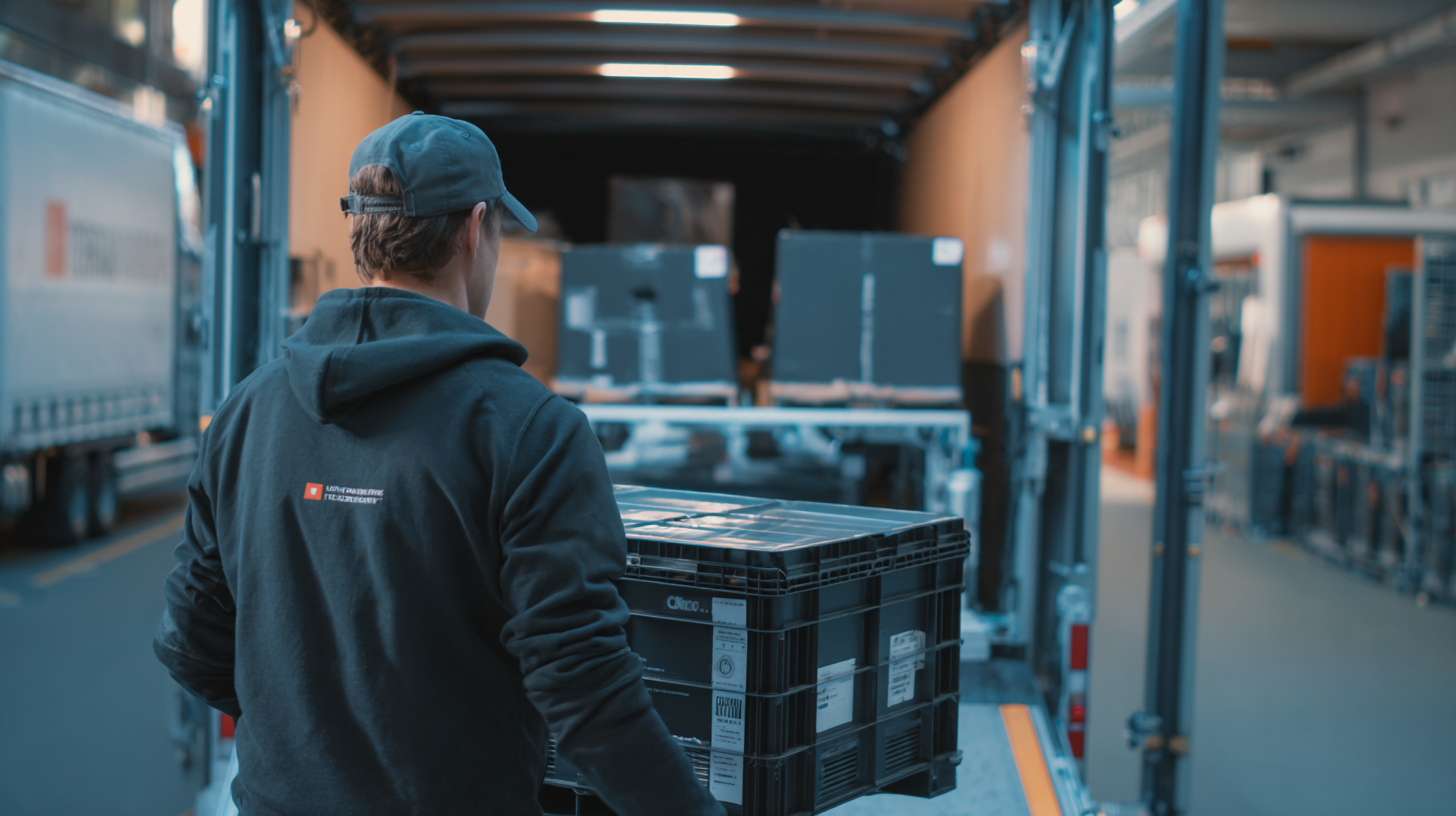Leave Your Message
In the rapidly evolving landscape of manufacturing and electronics packaging, Transformer Carrier Tape technology stands at the forefront of innovation, providing critical solutions for the efficient transport and protection of semiconductor components. As we look towards 2025, it's crucial to explore the alternatives to traditional methods, assessing how these emerging technologies can enhance efficiency, sustainability, and overall performance. This guide aims to navigate the complexities of Transformer Carrier Tape, highlighting the advancements that are shaping the industry's future. By examining various alternatives and their implications on manufacturing processes, we will uncover a roadmap for businesses seeking to adapt and thrive in a competitive environment. Join us as we delve into the exciting developments that promise to redefine how we approach component packaging and transport in the coming years.

Transformer carrier tape technology plays a crucial role in the manufacturing and packaging of electronic components. This technology provides a reliable means to transport and store sensitive electronic parts, ensuring their protection from physical damage and environmental hazards. Key to understanding transformer carrier tape technology is the concept of conductivity, which enables efficient power distribution within electronic devices while minimizing energy loss. The design of the tape itself is engineered to facilitate ease of handling during assembly processes, maximizing productivity in manufacturing lines.
Another essential aspect of transformer carrier tape technology is the material composition used in the tapes. Commonly crafted from durable plastics, these tapes can be tailored for specific applications, enhancing their performance characteristics such as temperature resistance and flexibility. By selecting appropriate materials, manufacturers can achieve optimal safety levels while adhering to industry standards. Advancements in manufacturing processes are continually improving the precision and efficiency of tape production, leading to enhanced operational capabilities across various sectors, including automotive and consumer electronics.
| Key Concept | Definition | Technological Advancement | Future Trends |
|---|---|---|---|
| Carrier Tape Materials | Materials used to make the tape that holds electronic components during transport and storage. | Development of biodegradable and lightweight yet durable materials. | Increased focus on sustainability and environmentally friendly materials. |
| Tape Dimensioning | Measurements of the tape width, pitch, and depth designed to fit specific components. | Precision engineering techniques for optimizing component placement. | Miniaturization of components requiring advanced dimensioning techniques. |
| Adhesive Technologies | Types of adhesives used to secure components within the carrier tape. | Innovations in low-temperature and high-strength adhesives. | Shift towards non-toxic and removable adhesive options. |
| Manufacturing Processes | Methods used to produce carrier tapes, such as extrusion and molding. | Automation and robotics integrated into production lines. | Adaptation of Industry 4.0 practices to enhance efficiency. |
| Testing and Quality Assurance | Procedures to ensure the reliability and integrity of carrier tapes. | Implementation of real-time monitoring systems for quality control. | Increased emphasis on standardized testing protocols globally. |
As we look ahead to 2025, the world of transformer carrier tape technology is poised for significant advancements driven by emerging trends in design and materials. With the surge in demand for compact, lightweight, and efficient electronic components, engineers are focusing on creating carrier tapes that not only meet these requirements but also enhance overall performance. Innovations such as the use of biodegradable materials and advanced polymers are paving the way for more sustainable solutions, addressing environmental concerns while maintaining durability and functionality.
In addition to material enhancements, the design of transformer carrier tapes is evolving to support more complex and varied component shapes. The introduction of customizable tape profiles allows for better fitting and protection during transportation and storage, reducing the risk of damage. Furthermore, the integration of smart technology into carrier tapes, like RFID tags for real-time inventory tracking, is revolutionizing how manufacturers manage supply chain processes. These trends signify a shift towards more intelligent and eco-friendly solutions in the transformer carrier tape industry, setting a new standard for future innovations.

The evolution of transformer carrier tape technology has opened new horizons for various industries, particularly in the agricultural sector. One notable application is the development of seed tape, which wraps crop seeds in biodegradable carrier materials. This innovative approach allows for precise planting, enhancing crop yield and reducing waste. By using specialized equipment, farmers can efficiently lay seed tape in farmlands, ensuring optimal growth conditions for the seeds embedded within.
Tip: When exploring the use of seed tape, consider climate conditions and soil type to choose the most suitable crops for your region. Additionally, assess the timing of planting to align with seasonal weather patterns for maximum effectiveness.
Another significant advancement is seen in the packaging industry, where the introduction of image recognition-based inspection control systems has revolutionized carrier tape packaging. This technology enhances quality assurance, ensuring that the packaging meets industry standards and reduces the chances of defects.
Tip: For businesses, investing in cutting-edge inspection technologies can lead to significant cost savings in the long run by minimizing waste and improving product reliability. Always stay informed about the latest innovations in carrier tape applications to remain competitive in the market.
The landscape of carrier tape production is undergoing a transformative shift, fueled by innovative manufacturing processes that prioritize efficiency and precision. As the demand for electronic components continues to surge, manufacturers are embracing advanced technologies such as automated tape forming and precision die-cutting. These methods not only enhance the speed of production but also ensure that the carrier tapes meet the stringent requirements of modern semiconductor packaging. By integrating smart manufacturing practices, companies are positioned to respond agilely to market fluctuations while minimizing waste.
Moreover, sustainability is becoming a pivotal focus in the evolution of carrier tape technology. Innovative materials and eco-friendly production techniques are being introduced to reduce the environmental impact of manufacturing processes. Biodegradable materials are emerging as viable alternatives to traditional plastics, catering to the increasing consumer demand for greener solutions. This commitment to sustainability not only helps manufacturers to comply with stricter regulations but also aligns with the broader industry trend towards responsible production. As we approach 2025, these advancements will continue to shape the future of carrier tape technology, ensuring that it keeps pace with the rapid evolution of the electronics industry.
In the rapidly evolving landscape of manufacturing, implementing advanced transformer carrier tape solutions has become essential for enhancing operational efficiency. According to a recent study by MarketsandMarkets, the global market for carrier tape technology is expected to grow from $2.8 billion in 2023 to $4.2 billion by 2025, reflecting a CAGR of 11.1%. This impressive growth underscores the importance of integrating innovative carrier tape designs that facilitate improved production processes and accuracy in semiconductor packaging.
To successfully adopt advanced transformer carrier tape solutions, organizations should consider the implications of high-speed production trends and the increasing demand for miniaturization in electronic components. The Institute of Electrical and Electronics Engineers (IEEE) predicts that by 2025, the semiconductor industry will require packaging solutions that can support components as small as 0.4mm. By investing in smarter, customizable carrier tape technologies, manufacturers can optimize their supply chain operations, reduce material waste, and achieve higher throughput. Collaborating with industry leaders to tailor these solutions to specific manufacturing requirements will be key in navigating this transformative phase effectively.

